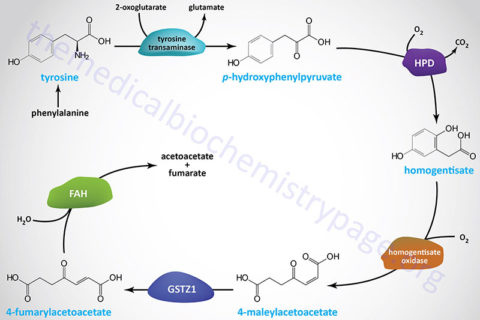
All four RalGEFs interact with active GTP-bound Ral through their RA domain, thereby directly activating Ral GTPases and making Ral-RalGEF a major Ras signaling pathway along with PI3K and RAF. Four of these Ral GEFs, namely RalGDS, Rgl1, Rgl2, and Rgl3, possess a Ras exchange motif (REM), a CDC25 homology domain, and a Ras association domain (RA). GAPs catalyze the hydrolysis of GTP to GDP, while GEFs promote GDP to GTP exchange by favoring conformational states of Ral that favor GTP binding ( 5). This process depends on the flexibility of two regions known as switch I (residues 41–51 in Ral GTPases) and switch II (residues 69–81 in Ral GTPases) ( 6). Cycling between GDP- and GTP-bound Ral is facilitated by guanine exchange factors (GEFs) and guanine activating proteins (GAPs) through a standard mechanism that is shared by members of the Ras superfamily ( 2, 5). Ral effector proteins include RalBP1 (Ral-binding protein 1)/RIP (Ral-interacting protein), Sec5, and exo84 ( 3, 4). GTP-bound Ral binds to a range of effector proteins triggering signaling through pathways that control multiple cellular processes. Like Ras, Ral GTPases cycle between an active GTP-bound and an inactive GDP-bound complex ( 2). Two Ral GTPases have been identified, RalA and RalB. Ral (Ras-like) GTPases were discovered while searching for RAS-related genes ( 1). Our discovery of a pocket with features found on known druggable sites and covalent modification of a bystander tyrosine residue present in Ral and Ras GTPases provide a strategy that could lead to therapeutic agent targeting oncogenic Ras mutants that are devoid of a cysteine nucleophile. The structure, along with additional high-resolution crystal structures of several analogs in complex with RalA, confirm the importance of key hydrogen bond anchors between compound sulfone oxygen atoms and Ral backbone nitrogen atoms. A high-resolution 1.18-Å X-ray cocrystal structure shows that the compound binds to a well-defined binding site in RalA as a result of a switch II loop conformational change. Here, we report that covalent bond formation by an aryl sulfonyl fluoride electrophile at a tyrosine residue (Tyr-82) inhibits guanine exchange factor Rgl2-mediated nucleotide exchange of Ral GTPase. However, Ral, and the overwhelming majority of mutant oncogenic K-Ras, are devoid of a druggable pocket and lack an accessible cysteine for the development of a covalent inhibitor. Mutant K-Ras (G12C) has enabled the development of covalent K-Ras inhibitors currently in clinical trials. Kirschstein Institutional National Research Award from the National Institute for General Medical Sciences (T32 GM008666) D.J.C.Ral (Ras-like) GTPases are directly activated by oncogenic Ras GTPases. was supported by an Australian Research Council Laureate Fellowship (FL150100106) M.R.L. The project was also supported by the Malaria Drug Accelerator (MalDA, BMGF OPP1054480 to M.R.L., S.O., K.K., M.C.S.L., J.C.N., and E.A.W.) L.T. is an NHMRC Research Fellow (APP1117183) and Investigator (APP1194263). is supported by an Investigator Award from Wellcome (100993/B/13/Z) M.W.P. and S.P.L.), a wholly owned subsidiary of Takeda Pharmaceuticals Company Limited. Millennium Pharmaceuticals, a wholly owned subsidiary of Takeda Pharmaceuticals Company Limited, provided access to ML901 under a Materials Transfer Agreement with the University of Melbourne.įunding: This work was funded by the following: the Global Health Innovative Technology Fund, Japan (H2019-104 to L.T., A.E.G., and S.B.) National Health and Medical Research Council (NHMRC, 1139884 to L.T.) Medicines for Malaria Venture (MMV RD/15/0007 to S.B., RD-08-2800 to J.B.) and Millennium Pharmaceuticals (to A.E.G. We thank the beamline staff for their assistance.

This research was partly undertaken on the MX2 and SAXS/WAXS beamlines at the Australian Synchrotron, part of the Australian Nuclear Science and Technology Organization, and made use of the ACRF Detector on the MX2 beamline.

We thank C.n Doerig, RMIT University, for providing eIK1 genetically disrupted parasites. Technical support and lead-in experiments: Y.-F. Support with the bioanalytical determination and PK evaluation in mouse blood samples by LC/MS-MS: A. Scheurer, Swiss Tropical and Public Health Institute, Switzerland. Support with the SCID mouse and panel assays: U. Lee, Jake Baum, Sabine Ottilie, Elizabeth A. Houghton, Alisje Churchyard, Mufuliat T. Pasaje, Krittikorn Kumpornsin, Carlo Giannangelo, Fiona J. Luth, Liting Ma, Mi-Sook Kim, Charisse Flerida A. Morton, Shih-Chung Huang, Tanya Puhalovich, Yawei Du, … Show All …, Sergio Wittlin, Shuai Nie, Madeline R.


 0 kommentar(er)
0 kommentar(er)
